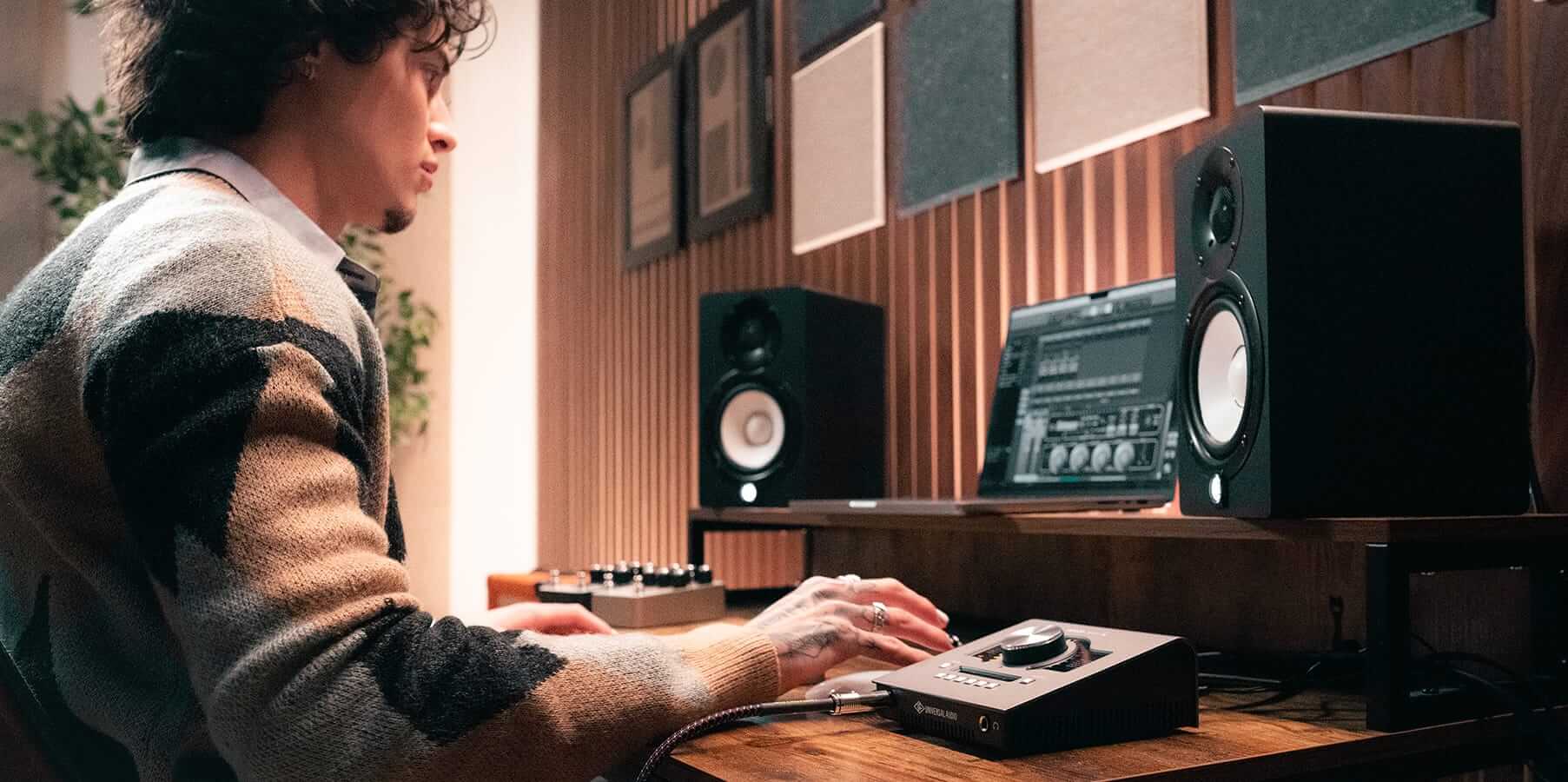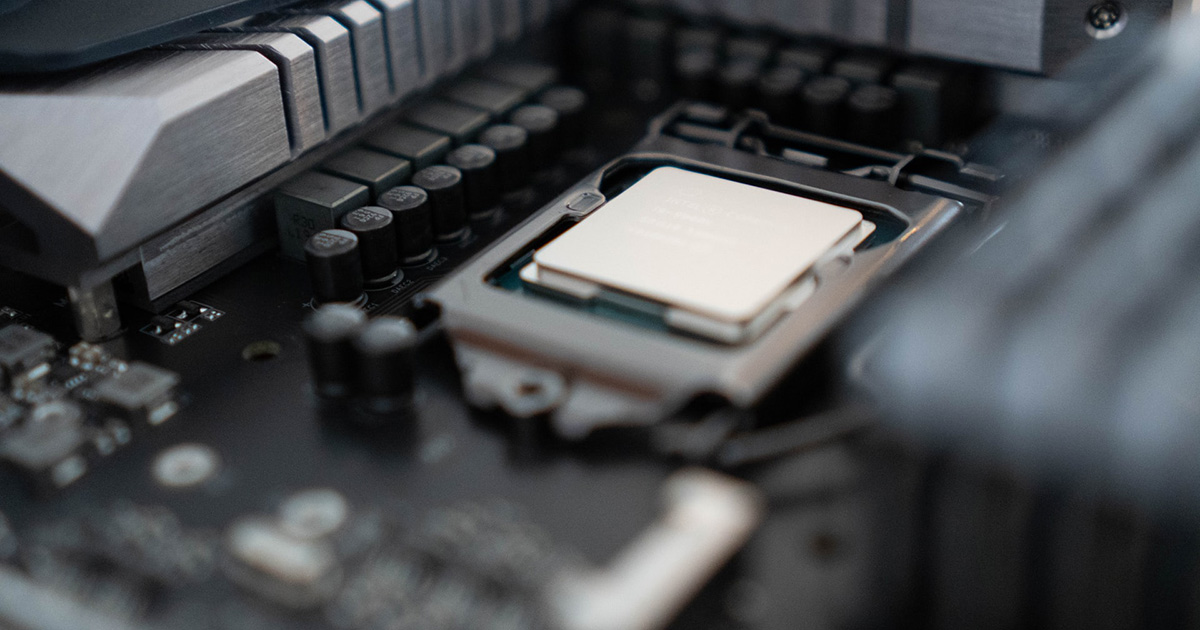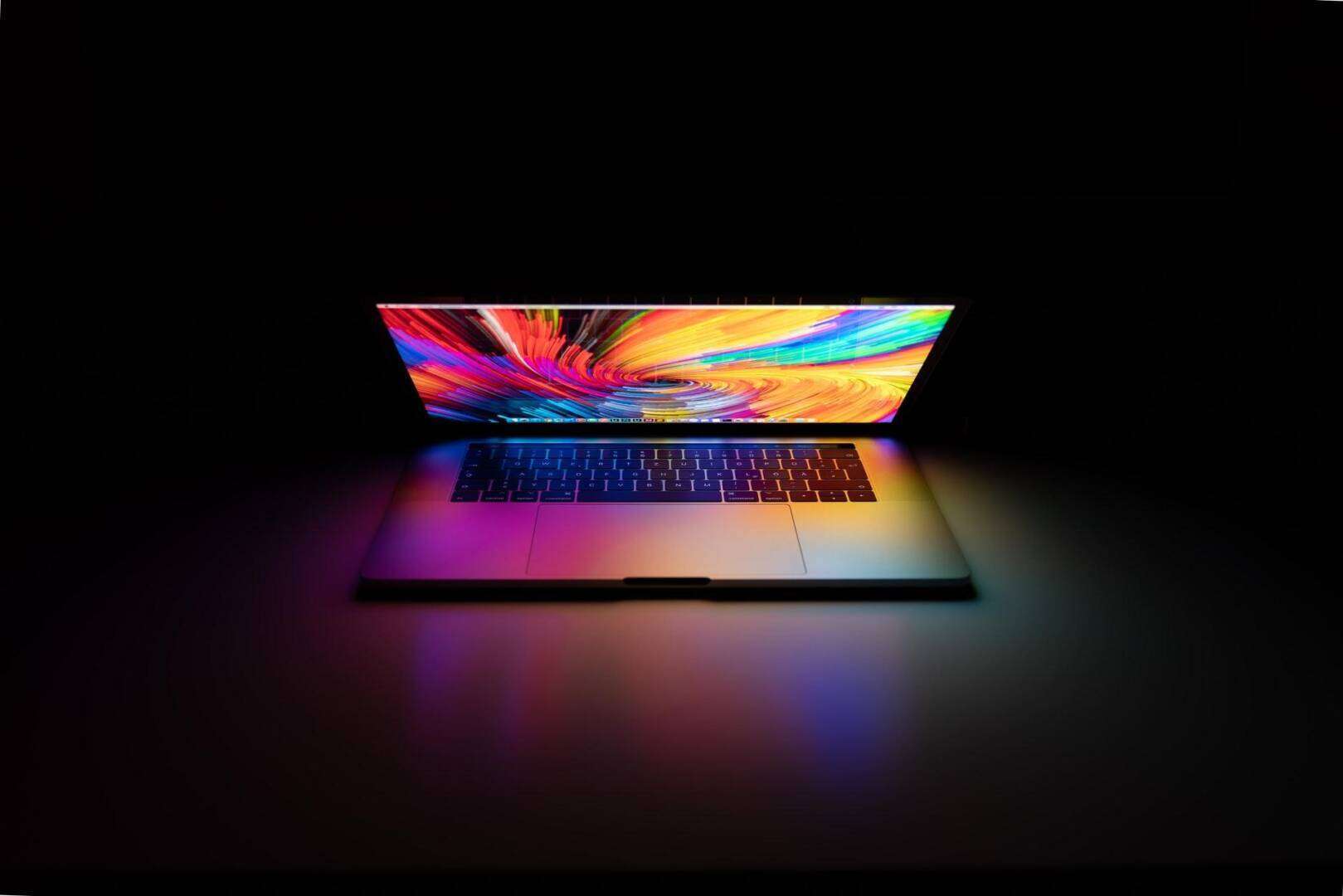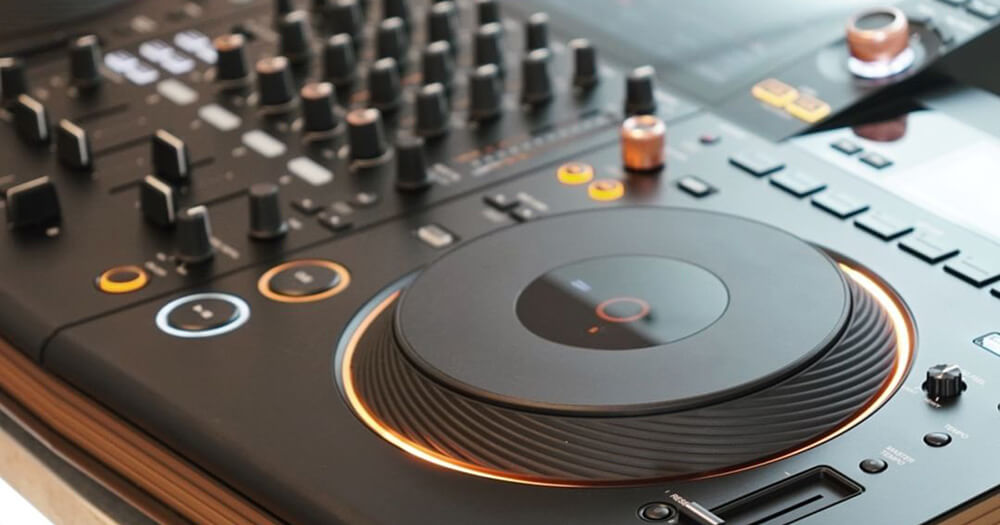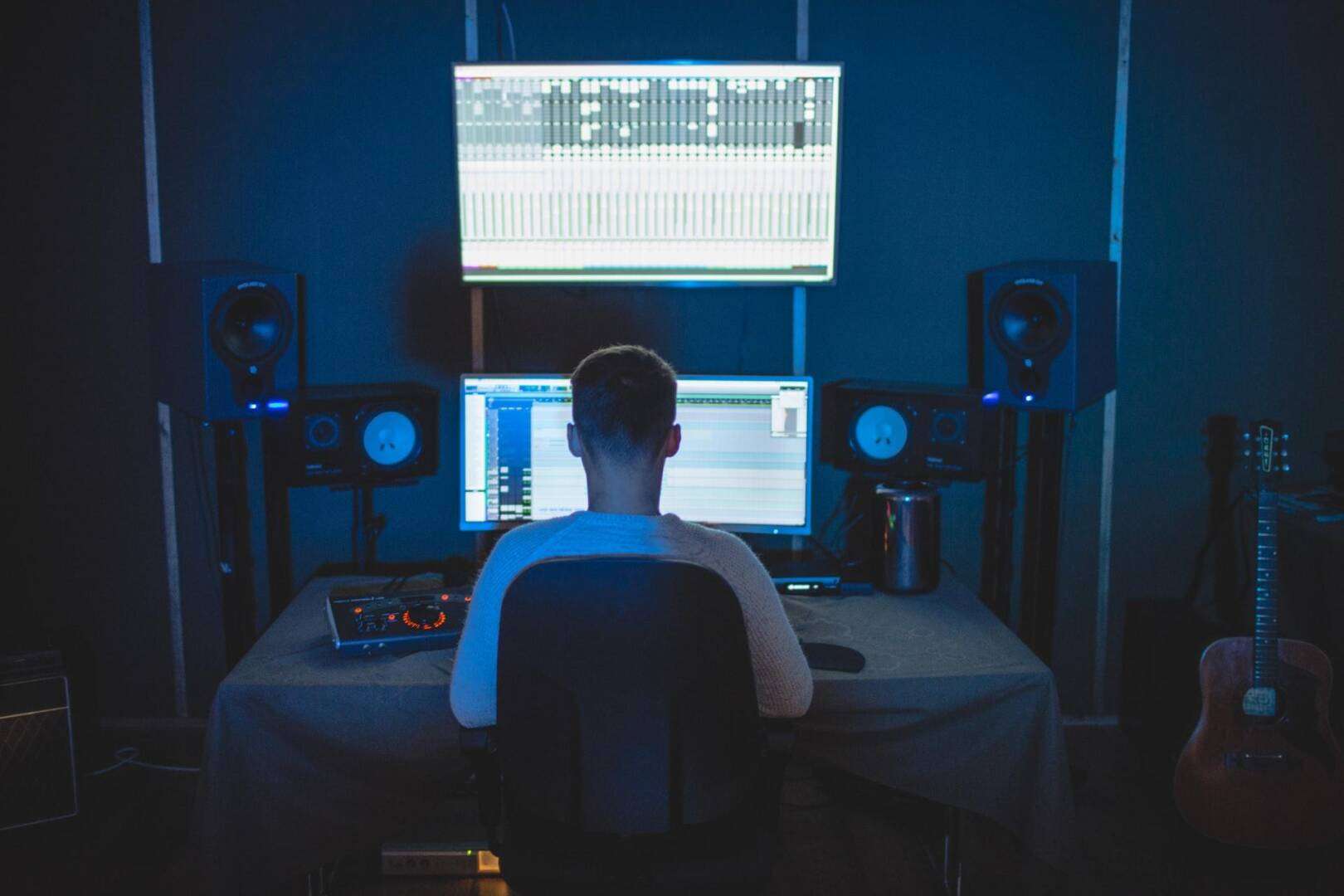The audio interface is the unsung hero of any music production setup. It serves as the central hub that connects all your gear, ensuring high-quality audio while offering a range of features to enhance your creative process. With a plethora of options available in the market, choosing the right audio interface can be a daunting task. This comprehensive guide aims to simplify that process, whether you’re a beginner, an intermediate producer, or a seasoned professional.
Understanding the Role of an Audio Interface
An audio interface serves as the bridge between your computer and your musical instruments or microphones. It converts analog signals to digital signals that your computer can process, and vice versa. Whether you’re recording vocals, instruments, or simply listening back to your mixes, an audio interface is essential for maintaining audio fidelity.
Why Do You Need One?
- High-Quality Audio: Built-in computer sound cards often compromise on audio quality. An audio interface provides superior AD/DA conversion.
- Connectivity: It allows you to connect various types of gear, including microphones, instruments, and studio monitors.
- Portability: Many interfaces are compact and portable, enabling you to produce music on the go.
Key Features to Consider
Before diving into product recommendations, it’s crucial to understand the features that matter most in an audio interface.
Inputs/Outputs (I/O)
The number of inputs and outputs you need depends on your setup. Solo artists may only need a couple, while bands may require eight or more.
Preamp Quality
High-quality preamps can make a significant difference in capturing a clean and transparent sound.
Compatibility
Ensure that the interface is compatible with your computer’s operating system and DAW (Digital Audio Workstation).
Budget
Interfaces can range from under $100 to well over $1,000. Your choice will depend on your needs and financial constraints.
Best Picks for Beginners
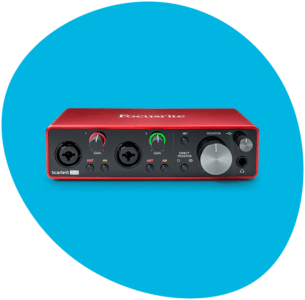
Focusrite Scarlett 2i2
The Focusrite Scarlett 2i2 is a compact, USB-powered interface that offers two high-quality Scarlett mic preamps. With a sample rate of up to 192kHz, it provides crystal-clear audio. The interface also features two balanced line outputs and a headphone jack with a dedicated volume control. Its “Air” mode adds a unique coloration to the sound, mimicking Focusrite’s classic ISA preamp. With its rugged metal unibody and intuitive front-panel controls, it’s a perfect entry-level interface that doesn’t compromise on quality.
Audient iD4 MK2
The Audient iD4 MK2 is a single-channel audio interface that offers a Class-A mic preamp, a JFET DI input for your guitar, and dual headphone outputs. It also features Audient’s ScrollControl technology, allowing the volume knob to be used for various functions within your DAW. With a USB 3.0 connection, it ensures low latency and high-speed data transfer. Its compact size makes it highly portable, ideal for musicians on the go.
Behringer U-PHORIA UMC22
The Behringer U-PHORIA UMC22 is an affordable option that offers a MIDAS-designed mic preamp and a 2×2 USB audio interface. It supports a 48 kHz sample rate, providing decent audio quality for beginners. The interface includes one XLR/TRS combo input, one 1/4″ instrument input, and two RCA outputs. It’s a straightforward, no-frills option that gets the job done for those on a tight budget.
Top Choices for Intermediate Producers
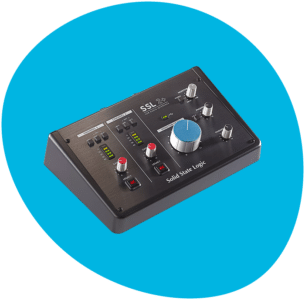
SSL 2+
The SSL 2+ is a 2-in/4-out USB-C audio interface that offers two SSL-designed microphone preamps and a 4K analog color enhancement feature, inspired by the SSL 4000 series console. With 24-bit/192kHz AD/DA converters, it ensures high-resolution audio. It also includes balanced monitor outputs and a headphone output with independent level control. The interface is bundled with an impressive software package, making it a complete solution for intermediate producers.
PreSonus Studio 1824c
The PreSonus Studio 1824c is a USB-C audio interface that offers a total of 18 inputs and 20 outputs, including 8 XMAX Class-A mic preamps. It features ADAT Optical I/O and S/PDIF I/O for added connectivity. With a 24-bit/192 kHz recording and playback capability, it’s suitable for complex recording setups. The interface also comes with PreSonus’ Studio One Artist DAW software and Studio Magic plug-in suite, adding extra value.
Steinberg UR22C
The Steinberg UR22C is a 2-in/2-out audio interface that features two Class-A D-PRE mic preamps, designed by Yamaha. It offers 32-bit/192 kHz audio resolution and includes MIDI I/O for connecting synths, drum machines, and other MIDI gear. The interface also provides DSP-powered effects and zero-latency monitoring. It’s a robust, all-metal unit that offers a wide range of features for intermediate producers.
Premium Options for Advanced Producers
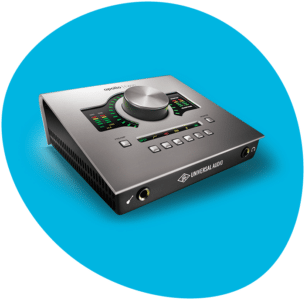
Universal Audio Apollo Twin X
The Universal Audio Apollo Twin X is a Thunderbolt 3 audio interface that offers two Unison-enabled mic preamps, providing impeccable emulations of classic preamps. It features elite AD/DA conversion and DUO or QUAD Core real-time UAD plug-in processing. With its LUNA recording system, it provides a tightly integrated and powerful recording environment. It’s a premium choice for professionals who require top-tier sound quality and functionality.
RME Babyface Pro FS
The RME Babyface Pro FS is a 12-in/12-out interface that offers high-end AD/DA converters and two digitally controlled preamps. It features USB 2.0, MIDI I/O, and an ADAT I/O for expandability. With its TotalMix FX software, it provides flexible routing and mixing options. Its low-jitter clock and high-quality preamps make it ideal for capturing pristine vocals and instruments.
Antelope Discrete 8 Pro
The Antelope Discrete 8 Pro is a rack-mounted interface that offers 8 console-grade, 6-transistor discrete preamps. It features 26 total inputs and 30 total outputs, including A/DAT, S/PDIF, and DB25. With its onboard FPGA FX, it provides a range of real-time effects and vintage gear emulations. It’s a premium, high-channel-count interface suitable for professional studios.
Final Thoughts
Choosing the right audio interface is a critical step in setting up your music production environment. Whether you’re a beginner looking for your first interface or a professional seeking to upgrade, understanding your needs and the features that matter most will guide you to the perfect choice. Happy producing!
